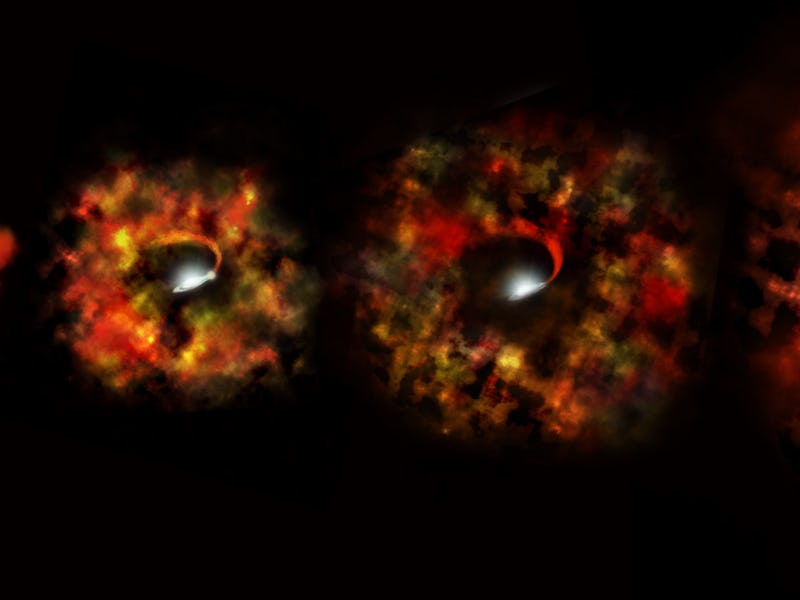
A normal star death — a supernova — involves spontaneous bursting into a magnificent display of gas and cosmic dust. But scientists have found a star that defied normalcy and instead just fizzled and faded before collapsing quietly into a black hole.
NGC 6946, which used to hang out in a spiral galaxy about 22 million light- years away, is mystifying scientists, particularly because of its home. This particular galaxy is often called the fireworks galaxy because supernovas frequently occur here. The star was 25 times the mass of our sun, so scientists assumed it would be a huge supernova. But instead, it all but disappeared, not even showing signs of infrared emittance. NGC 6946’s supernova was so quiet that astronomers used the dual power of the Large Binocular Telescope in Arizona and NASA’s Hubble and Spitzer space telescopes to even detect it.
After some very difficult observations and a large process of elimination, they believe the star collapsed into a black hole.
It’s difficult to explain what triggered this quiet collapse, but the running theory is that stars wouldn’t be able to pack enough energy to produce a supernova and then a massive black hole. In fact, it would be much easier for a star to use its energy to immediately go to the black hole stage, skipping its supernova altogether.
This illustration shows the final stages in the life of a supermassive star that fails to explode as a supernova but instead implodes under gravity to form a black hole
So far, this star is the first to have been observed to go straight to a black hole, but the researchers believe it happens in about 30 percent of stars of this size.
“The typical view is that a star can form a black hole only after it goes supernova,” Christopher Kochanek, professor of astronomy at The Ohio State University, said. “If a star can fall short of a supernova and still make a black hole, that would help to explain why we don’t see supernovae from the most massive stars.”